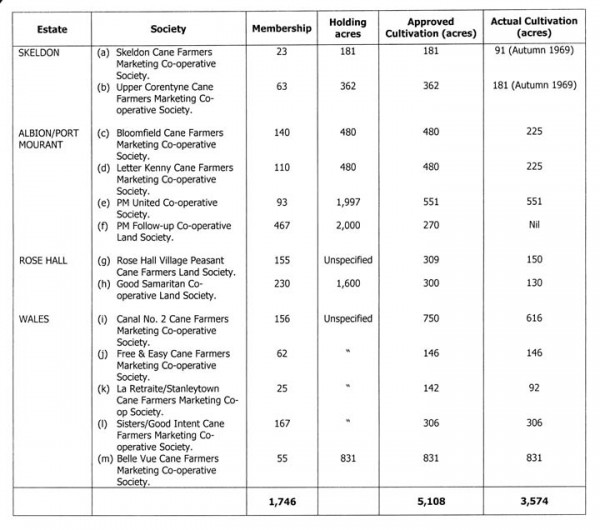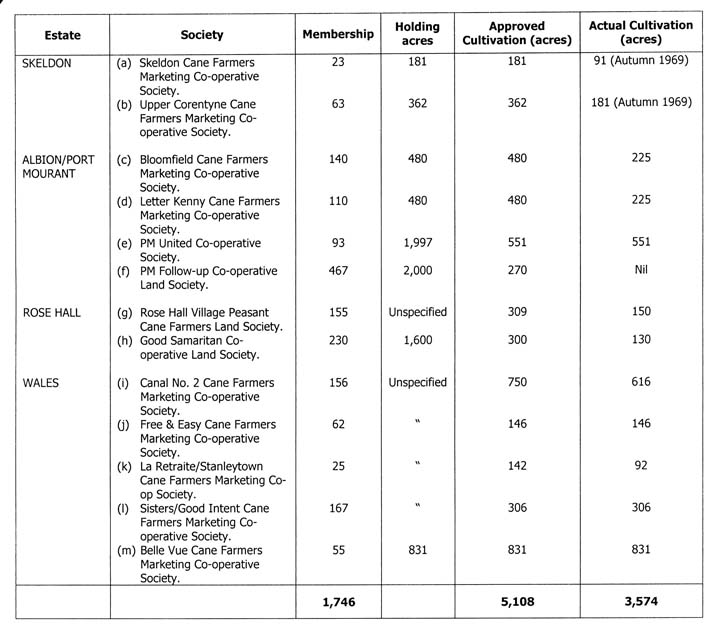Dear Editor,
It is amazing how the Minister of Agriculture refuses to be reconciled to the fact that he knows less than he professes about the sugar industry, and in the most recent instance very little about cane farming. But perhaps the executive managers of GuySuCo should be blamed for not advising him effectively, although it may well be that he did not ask.
Why in any case should the designated policy-maker and organisationally the decision-maker of last resort, not allow the appointed managers to function in their rightful roles, the apparent non-discharge of which will likely earn them public reprimand – a most demotivating career incentive. But what is more worrying is the substantial misinformation furnished to a gullible press which, despite its unacquaintance with the subject, does no research for accuracy, or distinction between fact and fiction.
It is therefore important once again to provide a brief summary of the development of what was called small cane farming, beginning with those truly individual small farmers at Plaisance and Beterverwagting Villages, who supplied cane to LBI Estate, and those in Buxton Village who supplied Enmore Estate. They preceded, by several decades, the structured form devised to expand small cane farming, following an agreement between then Premier Cheddi Jagan, and Booker Chairman Jock Campbell.
Arising from those talks some time between 1963-64, a Cane Farming Development Fund of $3.7M was established, the subscribers being Barclays Bank DCO, Royal Bank of Canada, Demerara Co and Bookers Sugar Estates, with the aim of funding cane farming, and preferably cooperatives where groups of individuals were involved.
But in the interval BSE, with some prescience had developed a virtual cane farming settlement at Belle Vue, West Demerara, for 55 farmers each with 15 acre plots – a total of 831 acres, housing kitchen gardens and a community centre.
It was after the passage of the National Cane Farming Act (1965) and the Cane Farming Contract (General Conditions) Rules (legislation deliberately ignored by every Minister of Agriculture) that greater impetus was given to organising prospective cane farming communities. By 1969 the situation was as shown below:
 It is clear from the above that the reported statement “The model of using private individual cane farmers works best in Region Three” is totally misleading. The (Wales Estate) cane farmers coops are still in operation. It may be that one reason for ignoring the legislation, and specifically with reference to the legal contract that is required to be effected between manufacturer (the Estate) and the cane farmer, would be the several legal obligations the former must observe in relation to matters of technical assistance by the estate, for example; but perhaps most importantly the formula for computing the price payable by respective manufacturers for cane received from suppliers. Technical assistance at the time was diligently provided by estate staff appointed as cane farming officers, more visible at Wales, Rose Hall, Albion/PM and Skeldon Estates. Rose Hall Estate also accommodated large individual farmers, not unlike Skeldon where the individual acreages were less, but were known to produce consistently higher yields than the estate cane.
It is clear from the above that the reported statement “The model of using private individual cane farmers works best in Region Three” is totally misleading. The (Wales Estate) cane farmers coops are still in operation. It may be that one reason for ignoring the legislation, and specifically with reference to the legal contract that is required to be effected between manufacturer (the Estate) and the cane farmer, would be the several legal obligations the former must observe in relation to matters of technical assistance by the estate, for example; but perhaps most importantly the formula for computing the price payable by respective manufacturers for cane received from suppliers. Technical assistance at the time was diligently provided by estate staff appointed as cane farming officers, more visible at Wales, Rose Hall, Albion/PM and Skeldon Estates. Rose Hall Estate also accommodated large individual farmers, not unlike Skeldon where the individual acreages were less, but were known to produce consistently higher yields than the estate cane.
When one notes the uncoordinated references to cane farming ‘development’ hither, thither and yon, it is clear that there is no cohesive plan (instead of just turning around), nor substantive programme for productive engagement with farmers – which perhaps accounts for mistaking cooperatives (including Canal No 2) as individuals.
Nor can talking to farmers at different locations, and just responding from the hip to different needs and demands, be portrayed as elements of a coordinated vision.
Such an upward and forward conversation can better be conducted by obeying the law and re-establishing the National Cane Farming Committee. Farmers can then speak and act with greater confidence on the same level playing field.
Yours faithfully,
E B John









